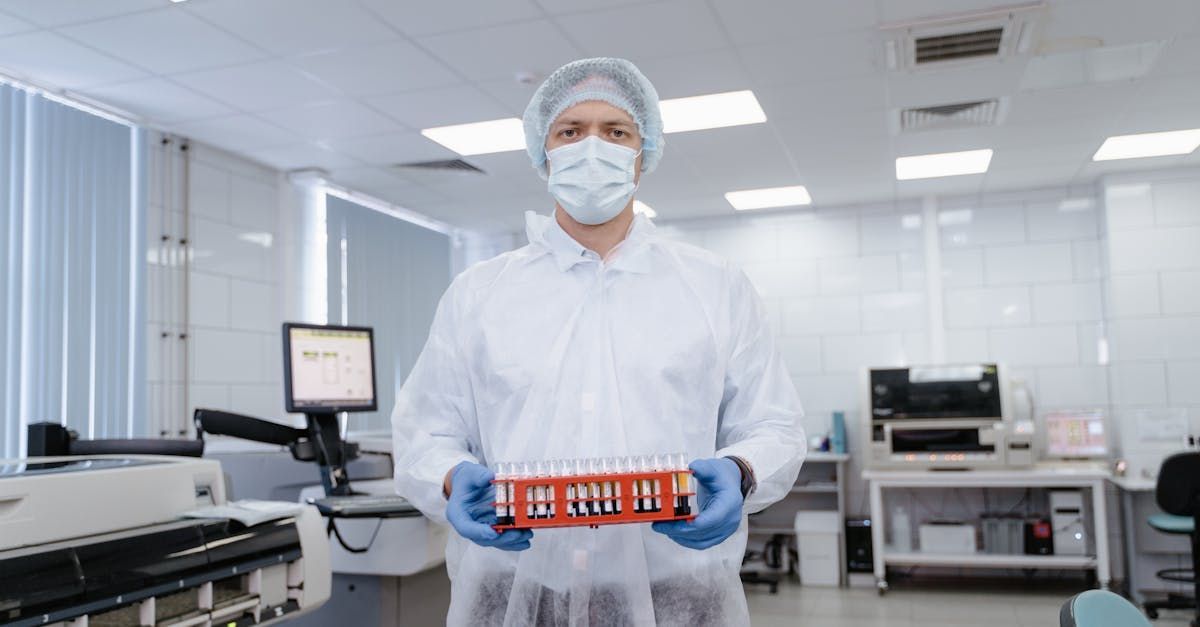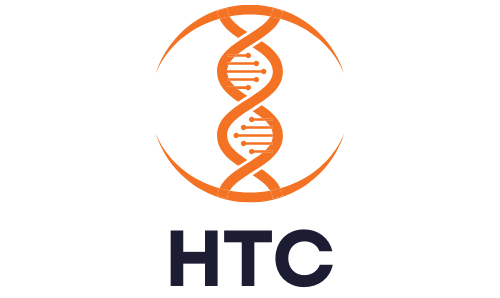Investing in HealthTech Infrastructure: A Strategic Approach
In the rapidly evolving landscape of modern healthcare, the significance of a robust HealthTech infrastructure cannot be overstated. HealthTech infrastructure encompasses the various technological components and systems that support the delivery of healthcare services. This includes digital health platforms, electronic health records (EHR) systems, telemedicine tools, and data management systems, all working together to enhance the efficiency, accessibility, and quality of healthcare.
HealthTech infrastructure is essential for ensuring that healthcare providers can deliver timely and effective care. It enables the seamless exchange of patient information, supports remote monitoring and telehealth services, and enhances data security and privacy. By integrating advanced technologies like artificial intelligence (AI) and the Internet of Things (IoT), HealthTech infrastructure also facilitates personalized medicine and predictive analytics, ultimately leading to better patient outcomes.
The purpose of this blog is to delve into the strategic benefits of investing in HealthTech infrastructure. By exploring the various components of HealthTech infrastructure and understanding its critical role in modern healthcare, we aim to highlight why it is a vital area for long-term investment. Through this discussion, we will uncover the potential for enhanced patient care, operational efficiency, and data-driven insights, illustrating how strategic investments in HealthTech infrastructure can yield significant long-term gains for investors and the healthcare industry as a whole.
Understanding HealthTech Infrastructure
To fully appreciate the importance of investing in HealthTech infrastructure, it is crucial to understand its core components and the supporting technologies that drive its effectiveness.
Core Components
- Digital Health Platforms
- Digital health platforms serve as the backbone of HealthTech infrastructure, offering a centralized system for managing various healthcare services. These platforms enable patient engagement, streamline administrative processes, and facilitate remote consultations. By integrating functionalities such as appointment scheduling, prescription management, and patient communication, digital health platforms enhance the overall efficiency of healthcare delivery.
- Electronic Health Records (EHR) Systems
- EHR systems are vital for maintaining comprehensive and accurate patient records. These systems allow healthcare providers to access and update patient information in real time, ensuring continuity of care and reducing the risk of medical errors. EHR systems also support data sharing among different healthcare entities, fostering collaboration and improving patient outcomes.
- Telemedicine and Remote Monitoring Tools
- Telemedicine and remote monitoring tools have revolutionized healthcare by enabling patients to receive medical care from the comfort of their homes. These tools facilitate virtual consultations, remote diagnostics, and continuous health monitoring, particularly for chronic disease management. By reducing the need for in-person visits, telemedicine enhances access to healthcare and minimizes the burden on healthcare facilities.
- Data Management and Cybersecurity
- Effective data management and robust cybersecurity measures are critical for safeguarding patient information. HealthTech infrastructure relies on the secure storage, transmission, and analysis of vast amounts of data. Implementing advanced data management systems and cybersecurity protocols ensures the protection of sensitive health data from breaches and unauthorized access, maintaining patient trust and regulatory compliance.
Supporting Technologies
- Cloud Computing
- Cloud computing provides the scalability and flexibility needed to handle the growing volume of healthcare data. By leveraging cloud-based solutions, healthcare organizations can store and process data efficiently, enabling real-time access to patient information and facilitating collaboration among healthcare providers. Cloud computing also supports the integration of various HealthTech applications, enhancing the overall functionality of the infrastructure.
- Artificial Intelligence (AI) and Machine Learning (ML)
- AI and ML are transforming HealthTech infrastructure by enabling predictive analytics, automated diagnostics, and personalized treatment plans. These technologies analyze large datasets to identify patterns and make informed decisions, improving the accuracy of diagnoses and the effectiveness of treatments. AI and ML also enhance operational efficiency by automating administrative tasks and optimizing resource allocation.
- Internet of Things (IoT) in Healthcare
- IoT devices, such as wearable health monitors and smart medical equipment, play a crucial role in HealthTech infrastructure. These devices collect real-time health data, providing valuable insights into patient conditions and enabling proactive interventions. IoT technology supports remote patient monitoring, chronic disease management, and preventive care, ultimately improving patient outcomes and reducing healthcare costs.
Understanding these core components and supporting technologies is essential for recognizing the strategic benefits of investing in HealthTech infrastructure. In the following sections, we will explore the current state of HealthTech infrastructure, the strategic benefits of investment, and key opportunities for investors.
The Current State of HealthTech Infrastructure
Key Regions Leading in HealthTech Infrastructure Development
Several regions around the world have emerged as leaders in developing HealthTech infrastructure, each demonstrating unique strengths and advancements.
- United States
- The U.S. is at the forefront of HealthTech innovation, with Silicon Valley and other tech hubs driving advancements. Major investments in digital health startups, telemedicine, and AI-driven healthcare solutions have positioned the U.S. as a leader in HealthTech infrastructure. Institutions like Mayo Clinic and Cleveland Clinic have implemented cutting-edge technologies to enhance patient care and operational efficiency.
- Europe
- Europe boasts a robust HealthTech ecosystem, particularly in countries like Germany, the UK, and the Netherlands. The European Union's regulatory frameworks support innovation while ensuring patient safety and data privacy. Initiatives like the European Health Data Space aim to facilitate the secure exchange of health data across member states, fostering collaboration and improving healthcare outcomes.
- Asia-Pacific
- The Asia-Pacific region, led by countries such as China, Japan, and Singapore, has seen rapid growth in HealthTech infrastructure. Investments in telemedicine, mobile health applications, and AI are transforming healthcare delivery in these regions. Singapore, in particular, has become a HealthTech hub, with government support and a conducive regulatory environment encouraging innovation.
Examples of Successful HealthTech Infrastructure Implementations
- Epic Systems Corporation (United States)
- Epic Systems is a leading provider of EHR solutions, with implementations in major healthcare organizations across the U.S. Its comprehensive EHR system integrates patient records, supports telehealth services, and facilitates data analytics, significantly enhancing healthcare delivery and patient outcomes.
- Babylon Health (United Kingdom)
- Babylon Health offers AI-powered telemedicine services, providing remote consultations and health assessments through a mobile app. Its successful implementation in the UK has expanded access to healthcare services, particularly in underserved areas, reducing the strain on traditional healthcare facilities.
- Ping An Good Doctor (China)
- Ping An Good Doctor is a digital health platform offering telemedicine, online pharmacy services, and health management tools. With millions of users in China, the platform has revolutionized healthcare access and delivery, leveraging AI to provide personalized health recommendations and diagnostics.
Challenges and Barriers
Funding and Investment Gaps
Despite the promising advancements in HealthTech infrastructure, significant funding and investment gaps remain. Many healthcare organizations, particularly in low- and middle-income countries, struggle to secure the necessary investments to develop and maintain modern HealthTech systems. Addressing these gaps requires concerted efforts from governments, private investors, and international organizations to ensure equitable access to HealthTech innovations.
Regulatory and Compliance Issues
HealthTech infrastructure development is often hindered by complex regulatory and compliance requirements. Navigating these regulations can be challenging, particularly for startups and smaller companies. Regulatory frameworks must strike a balance between fostering innovation and ensuring patient safety and data privacy. Harmonizing regulations across regions can also facilitate the global adoption of HealthTech solutions.
Technological Interoperability
Achieving seamless interoperability between different HealthTech systems remains a significant challenge. Healthcare organizations often use disparate systems that do not communicate effectively, leading to inefficiencies and data silos. Developing standardized protocols and encouraging collaboration among technology providers can enhance interoperability, allowing for the seamless exchange of health data and improving the overall efficiency of healthcare delivery.
Strategic Benefits of Investing in HealthTech Infrastructure
Investing in HealthTech infrastructure offers a multitude of strategic benefits that extend beyond immediate technological advancements. These benefits encompass enhanced patient care, operational efficiency, and data-driven insights, ultimately contributing to long-term gains for healthcare providers and investors alike.
Enhanced Patient Care
Improved Diagnostics and Treatment
HealthTech infrastructure significantly enhances the accuracy and speed of diagnostics and treatment. Advanced diagnostic tools, powered by AI and machine learning, can analyze medical images and patient data more accurately than traditional methods. For instance, AI algorithms can detect early signs of diseases such as cancer from imaging scans, enabling earlier intervention and improved treatment outcomes. Additionally, telemedicine platforms allow for real-time consultations with specialists, regardless of geographic location, ensuring that patients receive timely and accurate diagnoses.
Increased Access to Healthcare Services
One of the most profound impacts of investing in HealthTech infrastructure is the increased access to healthcare services. Telemedicine and remote monitoring tools make it possible for patients in remote or underserved areas to receive medical care without the need to travel long distances. This is particularly beneficial for managing chronic conditions, where continuous monitoring and regular consultations are crucial. Digital health platforms also facilitate patient engagement through online portals where patients can book appointments, access medical records, and communicate with healthcare providers, thereby enhancing the overall patient experience.
Operational Efficiency
Streamlined Administrative Processes
Investments in HealthTech infrastructure streamline administrative processes, reducing the burden on healthcare staff and improving overall operational efficiency. Electronic Health Records (EHR) systems, for example, automate the management of patient records, billing, and scheduling. This not only reduces administrative workload but also minimizes errors associated with manual data entry. Furthermore, integrated digital health platforms allow for seamless coordination between different departments and healthcare providers, enhancing workflow efficiency and reducing wait times for patients.
Reduced Healthcare Costs
By optimizing operational efficiency and improving patient care, HealthTech infrastructure investments contribute to significant cost savings for healthcare organizations. Automated systems and streamlined processes reduce the need for manual labor and administrative overhead. Moreover, early and accurate diagnostics facilitated by advanced HealthTech tools can prevent costly treatments and hospitalizations by enabling early intervention. Remote monitoring and telemedicine also reduce the need for in-person visits, lowering transportation costs and the associated logistical expenses.
Data-Driven Insights
Better Health Outcomes Through Data Analytics
HealthTech infrastructure supports the collection and analysis of vast amounts of health data, providing valuable insights that drive better health outcomes. Data analytics tools can identify trends and patterns in patient data, enabling healthcare providers to make informed decisions about treatment plans and care management. For instance, predictive analytics can forecast patient deterioration, allowing for proactive interventions that improve patient outcomes. Additionally, population health management tools analyze data across different demographics to identify public health trends and inform policy decisions.
Support for Personalized Medicine
Investments in HealthTech infrastructure are pivotal for the advancement of personalized medicine. By integrating genomic data with electronic health records and utilizing AI-driven analytics, healthcare providers can develop tailored treatment plans that are specific to an individual's genetic makeup. This approach not only enhances the effectiveness of treatments but also reduces the risk of adverse reactions. Personalized medicine represents a significant shift from the one-size-fits-all approach, leading to more precise and effective healthcare interventions.
Understanding these strategic benefits underscores the importance of HealthTech infrastructure investments. As we move forward, the focus on these benefits will highlight the key investment opportunities in the HealthTech sector, showcasing how strategic investments can lead to transformative changes in healthcare delivery and patient outcomes.
Investment Opportunities in HealthTech Infrastructure
As the demand for advanced healthcare solutions grows, so does the potential for lucrative investment opportunities in HealthTech infrastructure. By focusing on key investment areas and emerging trends, investors can position themselves at the forefront of this rapidly evolving sector.
Key Investment Areas
Digital Health Startups
Investing in digital health startups offers a chance to support innovative solutions that address current healthcare challenges. These startups often bring fresh perspectives and cutting-edge technologies to the market, ranging from telemedicine platforms and mobile health applications to AI-driven diagnostic tools. Early-stage investments in these companies can yield significant returns as they scale and gain market traction.
Established HealthTech Companies Expanding Infrastructure
Established HealthTech companies that are expanding their infrastructure present a relatively lower-risk investment opportunity compared to startups. These companies often have proven track records, established customer bases, and robust revenue streams. Investing in their expansion initiatives—such as upgrading EHR systems, developing new telehealth capabilities, or enhancing data security measures—can lead to sustained growth and market dominance.
Public-Private Partnerships in Healthcare Technology
Public-private partnerships (PPPs) in healthcare technology offer a unique investment avenue that combines the resources and expertise of both sectors. These collaborations can drive large-scale HealthTech infrastructure projects, such as nationwide telehealth networks or integrated health information systems. PPPs are particularly effective in addressing funding gaps and accelerating the implementation of innovative healthcare solutions, making them an attractive option for investors seeking impactful investments.
Emerging Trends
Growth of Telehealth Services
The rapid growth of telehealth services represents one of the most significant trends in HealthTech infrastructure. The COVID-19 pandemic accelerated the adoption of telemedicine, and this momentum continues as both patients and providers recognize its benefits. Investors can capitalize on this trend by supporting companies that offer telehealth platforms, remote patient monitoring devices, and related services. The expansion of telehealth services not only improves healthcare access but also reduces costs and enhances patient convenience.
Adoption of AI and ML in Clinical Settings
The integration of AI and machine learning (ML) into clinical settings is revolutionizing healthcare delivery. AI and ML algorithms can analyze vast amounts of data to provide insights that aid in diagnostics, treatment planning, and patient management. Investing in companies that develop AI-driven healthcare solutions, such as predictive analytics tools and automated diagnostic systems, can yield substantial returns as these technologies become more widely adopted.
Expansion of IoT Applications in Patient Monitoring
The Internet of Things (IoT) is playing a critical role in patient monitoring and chronic disease management. IoT devices, such as wearable health monitors and smart medical equipment, collect real-time health data that can be used to track patient conditions and alert healthcare providers to potential issues. The expansion of IoT applications in healthcare offers investors opportunities to support innovations that improve patient outcomes and reduce healthcare costs. Companies developing IoT-enabled devices and platforms are well-positioned for growth as the demand for remote monitoring solutions increases.
Case Studies of Successful Investments
Examining real-world examples of successful investments in HealthTech infrastructure provides valuable insights into how strategic funding can lead to transformative improvements in healthcare delivery and patient outcomes. Here are three illustrative case studies:
Digital Health Platform
Background and Investment Details
Teladoc Health, a global leader in telemedicine and virtual care, received substantial investments from venture capital firms and private equity investors in its early stages. Teladoc's platform offers a range of digital health services, including virtual consultations, remote diagnostics, and chronic disease management.
Impact on Healthcare Delivery and Patient Outcomes
The investment in Teladoc Health enabled the company to expand its services globally, significantly increasing access to healthcare. Patients benefited from convenient, on-demand consultations with healthcare professionals, reducing the need for in-person visits. The platform's integration of AI-driven diagnostic tools improved the accuracy and speed of medical assessments, leading to better patient outcomes. Teladoc's success also demonstrated the scalability of digital health platforms and their potential to address healthcare accessibility issues worldwide.
Telemedicine Network Expansion
Overview of the Project and Funding
The Mercy Virtual Care Center, a telemedicine facility launched by Mercy Health, represents a significant investment in telemedicine infrastructure. The project was funded through a combination of internal investments and grants, totaling approximately $54 million. Mercy Virtual offers a comprehensive suite of telehealth services, including virtual consultations, remote patient monitoring, and teleICU support.
Results and Long-Term Benefits
The expansion of Mercy Virtual's telemedicine network has led to notable improvements in patient care and operational efficiency. Patients in rural and underserved areas gained access to specialized medical care without the need to travel long distances. The teleICU service, in particular, provided critical care support to smaller hospitals, reducing patient transfers and improving outcomes for critically ill patients. Over time, the investment in telemedicine has demonstrated cost savings for Mercy Health, decreased hospital readmissions, and enhanced patient satisfaction.
Data Management and Security Upgrade
Description of the Initiative and Investment
Kaiser Permanente, one of the largest healthcare providers in the United States, undertook a significant data management and security upgrade initiative. The investment, which included over $4 billion in IT infrastructure improvements, focused on enhancing the security of electronic health records (EHR), implementing advanced data analytics, and ensuring compliance with regulatory standards.
Enhanced Data Security and Operational Improvements
The investment in data management and security resulted in substantial improvements in Kaiser Permanente's operational capabilities. Enhanced data security measures protected patient information from cyber threats, maintaining trust and compliance with regulations such as HIPAA. The implementation of advanced analytics tools enabled Kaiser Permanente to leverage patient data for predictive modeling and personalized care plans, leading to better health outcomes. Additionally, streamlined data management processes reduced administrative burdens and improved the efficiency of healthcare delivery.
Notable Labs
Notable Labs has been strategically investing in HealthTech infrastructure to advance their precision medicine initiatives. Their proprietary Predictive Precision Medicines Platform (PPMP) leverages multi-dimensional biological assays and machine learning to simulate and predict patient responses to cancer treatments. This platform has been validated through multiple clinical studies, demonstrating its effectiveness in predicting treatment outcomes and reducing risks associated with drug development.
The recent merger with VBL Therapeutics and the infusion of $10.3 million in new capital underscores Notable's commitment to expanding their technological capabilities and therapeutic pipeline. This merger aims to accelerate the development of innovative treatments, particularly for acute myeloid leukemia (AML), and highlights the company's strategic focus on integrating cutting-edge HealthTech infrastructure to enhance patient outcomes and streamline drug development processes
Future Directions and Considerations
As HealthTech infrastructure continues to evolve, emerging technologies and strategic considerations will shape the future landscape of healthcare. Investors need to stay informed about innovative technologies on the horizon and adopt strategic approaches to maximize their returns while contributing to the advancement of healthcare.
Innovative Technologies on the Horizon
Predictive Analytics and Big Data
Predictive analytics, powered by big data, is set to revolutionize healthcare by enabling proactive and preventive care. By analyzing large datasets, healthcare providers can identify patterns and predict potential health issues before they become critical. This approach can significantly improve patient outcomes by facilitating early intervention and personalized treatment plans. Investments in companies developing advanced analytics tools and big data platforms will be crucial as the demand for data-driven healthcare solutions grows.
Advanced Wearable Devices and Sensors
Wearable devices and sensors are becoming increasingly sophisticated, offering real-time monitoring of vital signs and other health metrics. These devices can track a wide range of parameters, from heart rate and glucose levels to sleep patterns and physical activity. The integration of wearables with HealthTech infrastructure enables continuous health monitoring, early detection of abnormalities, and timely medical interventions. Investing in the development and deployment of advanced wearable technology presents a promising opportunity for enhancing patient care and wellness.
Strategic Recommendations for Investors
Focus on Scalable Solutions
Scalability is a key factor in the success of HealthTech infrastructure investments. Investors should prioritize companies and technologies that can scale to meet growing demand and expand across different markets. Scalable solutions ensure that investments can adapt to changing healthcare needs and accommodate an increasing number of users without compromising performance or quality.
Prioritize Cybersecurity and Data Privacy
As HealthTech infrastructure relies heavily on digital data, ensuring robust cybersecurity and data privacy is paramount. Investors should support initiatives that implement advanced security measures to protect sensitive patient information from cyber threats and breaches. Prioritizing investments in companies that adhere to stringent data privacy regulations and employ state-of-the-art cybersecurity protocols will not only safeguard patient data but also enhance the credibility and trustworthiness of HealthTech solutions.
Foster Collaborations with Healthcare Providers and Tech Innovators
Collaboration between healthcare providers and technology innovators is essential for the successful implementation of HealthTech infrastructure. Investors should encourage and facilitate partnerships that bring together the expertise of both sectors. By fostering collaborations, investors can support the development of integrated solutions that address real-world healthcare challenges and improve patient outcomes. These partnerships can also accelerate the adoption of new technologies and drive innovation in healthcare delivery.
Recap of Key Points
Importance of HealthTech Infrastructure Investment
Investing in HealthTech infrastructure is vital for modernizing healthcare delivery and ensuring that healthcare systems can meet the growing demands of patients. A robust HealthTech infrastructure encompasses a range of technologies, from digital health platforms and EHR systems to telemedicine tools and data management systems. These components work together to enhance the efficiency, accessibility, and quality of healthcare.
Strategic Benefits and Long-Term Gains
The strategic benefits of investing in HealthTech infrastructure include improved patient care through better diagnostics and treatment, increased access to healthcare services, and enhanced operational efficiency by streamlining administrative processes and reducing costs. Additionally, leveraging data-driven insights supports personalized medicine and leads to better health outcomes. These benefits contribute to long-term gains for both healthcare providers and investors.
The Evolving Landscape of Healthcare and the Critical Role of Technology
The healthcare landscape is continually evolving, driven by advancements in technology. HealthTech infrastructure plays a critical role in this evolution, enabling the integration of innovative solutions such as AI, machine learning, and IoT into healthcare delivery. These technologies are transforming how healthcare services are provided, making them more efficient, effective, and patient-centered. As technology continues to advance, investing in HealthTech infrastructure will be crucial for staying ahead in the healthcare industry.
Encouragement for Strategic Investment to Drive Future Healthcare Advancements
To drive future advancements in healthcare, strategic investment in HealthTech infrastructure is essential. Investors should focus on scalable solutions, prioritize cybersecurity and data privacy, and foster collaborations between healthcare providers and tech innovators. By doing so, they can support the development and implementation of cutting-edge technologies that will improve patient care and healthcare outcomes.
Engage with HealthTech Innovations
Staying engaged with the latest developments in HealthTech is crucial for making informed investment decisions. Attending industry conferences and events provides valuable opportunities to learn about new technologies, network with industry leaders, and gain insights into emerging trends. These events also offer a platform to explore potential investment opportunities and collaborations.
Collaborating with HealthTech startups and innovators allows investors to support the development of groundbreaking solutions that address current healthcare challenges. By partnering with early-stage companies, investors can contribute to the growth and success of innovative technologies that have the potential to transform healthcare delivery. These collaborations also provide opportunities to share expertise, resources, and networks, fostering mutual growth and innovation.
Subscribing to industry publications and newsletters is an effective way to stay informed about the latest trends, research, and developments in HealthTech. These resources offer valuable insights into market dynamics, regulatory changes, and technological advancements, helping investors stay updated and make well-informed decisions.
Following key influencers and thought leaders in HealthTech on social media and professional platforms provides real-time updates and expert perspectives on industry developments. These thought leaders often share valuable insights, research findings, and opinions that can inform investment strategies and highlight emerging opportunities in the HealthTech sector.










